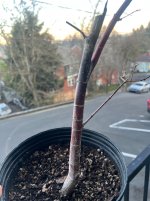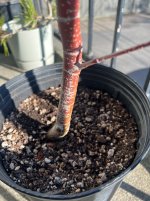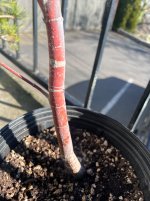I was surprised when I went to their site and saw it was a form of copper. Seems like a huge price to pay. The 18 maples that are dead are in almost 100% 0rganic growers mix that I have been using virtually unchanged for over 40 years. It is a variation of what almost all nurseries use that is tweaked for individual climate and such. It really is not feasible for me two grow hundreds of pots from 4 inches to 20 gallon using a bonsai mix. At any rate, the death seems to have been isolated. I have one significant JM that is on the opposite side of the house in a bonsai mix that may or may not have pseudomonas, but it took a turn 2 days ago and all of its inner leaves turned bright autumn red in the morning and brown a crispy in the evening. I don't think it is the same, hope not. I was repotted fairly late in the season, a few weeks ago, so it may be reacting to that assault.
Thanks for pitching in .








